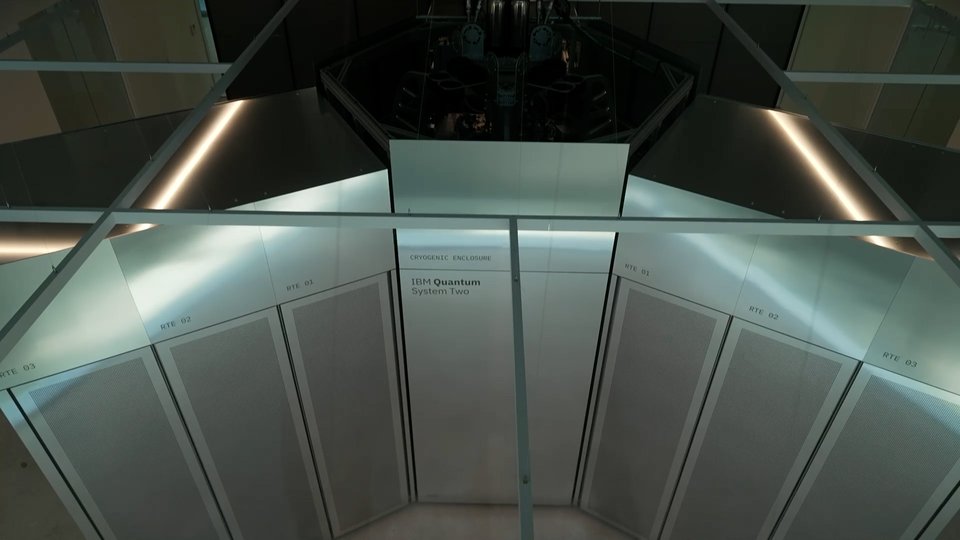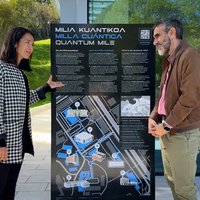Hardening the slopes
The A8 motorway in front of Elgoibar. Who else is Nature and Man doing here? When the road was made, a considerable part of the mountain was taken away, and, being a narrow valley, the slope of the side of the road was very high and steep. Even the construction techniques of 40 years ago were not current. As a result, this is an ideal place for frequent pebbles. The tasks that are being carried out now are aimed at keeping the mountain in place.
Iñigo Cadarso, BIDEGI"Here, you
see, we are at a relatively high altitude, 63 meters. Seven months ago there was a landslide; this whole part fell down, thankfully we had this screen, and we had the guts. We were lucky, and the stones didn't make it to the road. But then we said: what do we have to do here to keep all this well? ".
The works are in progress. Gunita has already been thrown into the most unstable areas of the Pendiente. The gunita is a projected concrete that is cast on steel nets. It helps the bolts or screws that will then be inserted through the rock to support the mountain to have more force and to act on a wider area. Before reaching this stage, however, it is essential to know well and thoroughly the slope to be fixed. The first step is to make a map or map of the mountain.
Juan Antonio Pérez, EUROESTUDIOS"When the rupture
occurs, the first task is to study the geometry and continuity of the planes. This layer is, for example, a plane. The slope is organized into groups of layers in blocks with discontinuities between them. To begin with, it is necessary to collect structural data: orientation of the planes, slope, inclination. That’s how you define a plan.”
To understand this, imagine a series of folios. If we tilt them, there'll come a time when they'll slide on each other... and fall. Something similar happened in Zumaia in 2005, but it’s not that simple. The structure of the mountain is always behind such an event, such as the weight, the continuity of the layers, the intervals, whether the skin is smooth or rough, whether they have mud fillings. All these data are collected when analyzing the slope. But many other factors, such as rainfall and temperature changes, are also involved.
In any case, the analysis of the slope structure identifies the blocks or clusters at risk of falling. The risk of each set or block is measured by the safety factor.
Juan Antonio Pérez, EUROESTUDIOS"ezegonkortasunaren
tipologia ezagututa -hau da, bloke bakoitza eta bere marruskadura-angelua-, beste indar bat sartzen dugu, ainguraketa-indarra. The sum of all forces provides a safety factor. We want to get to 1.5.”
Therefore, all these calculations say where to insert the bolts or screws, how long they must be and how strongly they must support this part of the mountain. The length, the dimensions of the block, the depth to which the plane of friction lies, where it can slip, will explain... In order for the screw to perform its clamping function, the head must be fixed behind this plane.
Carlos Palomares, SLECE"This is
an anchor bolt. There are many ways of anchoring, it’s about getting inside the slope, at the end. These are designed specifically for this site, to make a force of 40 tons. Up there, you have to go to the cable, but here's enough. These are 18 meters. Depending on the job the cable can reach 40-50 meters... but these are slightly longer lengths."
The bolts are protected from corrosion: inside with grease and above with a PVC cover. Concrete will be introduced through this pipe to the tip.
the total number of bulbs to be installed is 296, ranging from 6 to 18 meters in length. Putting everyone in their place is not a slow task. This one that they are entering has a weight of 12 meters and almost 300 kilos. The largest ones, as we said, are 18 meters long and they walk around 400 kilos.
Iñigo Cadarso, BIDEGI"In the
end it is like inserting a taco: you make a hole, in the last part you have a kind of plug, where the mortar penetrates to the bottom. When this takes strength, it is pulled. of the 18 meters, the bulb is usually the last 3, 4 meters, made with mortar, from which the strip is made."
Then pull it up, and you have to tie it up. The initial calculations indicate the strength to which they are subjected. On the surface, the base and the concrete nut will resist the force exerted by the bolt.
The work won't end there. This one that's covered in weeds is a dynamic network. This technology comes from Switzerland. It's not surprising. As in the Basque Country, or even more, there is a predominance of tears.
One of these faced a landslide seven months ago, and to finish the job, they will have to put a new one in its place. To finish, the entire area will be covered with a thin mesh spread out in the form of screens. The bulbs, the net, the screen, with all of them should be enough.
Iñigo Cadarso, BIDEGI"Zero
risk is impossible to reach. You have a safety factor, and just in case you always hit it from above, but the risk is there, rain, temperature changes... we always try to make it less dangerous."
In fact, you never know what might come from above.
Buletina
Bidali zure helbide elektronikoa eta jaso asteroko buletina zure sarrera-ontzian










